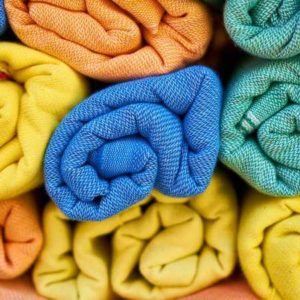Introduction:
The textile industry, a colossal entity responsible for an alarming 20% of global wastewater and 10% of carbon emissions, has long been under scrutiny for its environmental footprint. However, a transformative wave is sweeping across the sector, marked by the emergence of sustainable fabrics. These materials, once peripheral in the world of fashion, are now at the forefront of an ecological renaissance, poised to redefine the narrative of the fashion industry.
1. Understanding Sustainability in Fabrics:
Sustainable fabrics are defined by several key principles:
- Utilization of Natural, Renewable, or Recycled Materials: This includes organic cotton, bamboo, and recycled polyester.
- Minimized Water and Energy Consumption: Sustainable production processes focus on reducing the environmental impact.
- Non-toxic Dyes and Treatments: Prioritizing safety and environmental health.
- Fair Labor and Ethical Sourcing: Ensuring the welfare of workers and ethical practices in sourcing materials.
These fabrics offer substantial environmental benefits, but the journey to true sustainability faces challenges like cost and scalability.
2. Innovation and Progress:
The realm of sustainable fabrics is buzzing with innovation:
- Biofabrication with Microorganisms: This cutting-edge technology employs bacteria and fungi to create eco-friendly textiles, offering a sustainable alternative to conventional fabric production. These biofabricated materials are not only unique but also biodegradable, aligning with eco-conscious manufacturing practices.
- Self-Healing Fabrics: A remarkable innovation in textile technology, self-healing fabrics are designed to repair themselves automatically, extending their usability. Infused with special materials, these fabrics react to physical damage by healing tears or holes, thereby reducing waste and prolonging garment life.
- Fabrics from Food Waste: This sustainable approach involves converting food waste and agricultural leftovers into high-quality textiles. By repurposing organic waste, these fabrics provide an environmentally friendly alternative to traditional textile sources, contributing to a more circular and waste-efficient economy.
- EcoArmor and Other Plant-Based Technologies: Moonlight Technologies has developed several plant-based innovations. These include EcoArmor, a sustainable antimicrobial technology, InsectProof, a plant-based bug repellent for fabrics, and MindfullyClean, a self-cleaning fabric technology. They also offer OdorSafe, which eliminates bad odors on fabrics, and a range of sustainably derived, non-toxic, biodegradable Natural Dyes.
- Recycled Fibers: Technologies like REPREVE®, SEAQUAL®, and ECONYL® are being used to turn plastic waste into recycled fibers. These fibers are environmentally friendly alternatives to virgin fibers and exhibit similar quality and performance characteristics.
- Biodegradable Polyester: Innovations like CiCLO® are addressing the issue of non-biodegradable synthetic fibers. CiCLO® technology enables polyesters to biodegrade in landfill conditions within a few years.
- 3D Printed Clothing: 3D printing technology is evolving in the fashion space, allowing for the creation of leather and fur-like materials and unique geometries, with minimal waste production.
- Virtual Clothes: With advancements in digital technologies, brands are creating virtual clothing solutions that enable users to try on clothes and get a feel of the fabric digitally, potentially reducing the need for physical samples.
- Plant-based and Plastic Waste Textiles: Companies are increasingly exploring eco-friendly textiles made from fruit, cactus-based leather, and single-use plastics, offering sustainable alternatives to traditional materials.
- Digital Textile Libraries: The rise of digitalization in the textile industry has led to the creation of digital textile libraries, aiding designers and brands in finding a wide range of materials online.
These innovations illustrate the diverse and exciting advancements in sustainable fabric technology, showcasing a strong move towards more environmentally friendly and technologically advanced textiles in the fashion industry.
3. The Fashion Revolution:
Consumer demand for eco-friendly fashion is surging. Sustainable fashion brands are responding by prioritizing transparency and ethical practices. To contribute, consumers can opt for sustainable fabrics, support brands with green credentials, and embrace second-hand fashion.
4. Looking Ahead:
The sustainable fabric movement promises a transformative impact on the fashion industry. Emerging trends and technologies hint at an even more innovative and environmentally conscious future.
Conclusion:
Sustainable fabrics are not just a trend but a movement towards a harmonious coexistence between fashion and the environment. As the industry evolves, every conscious choice by consumers and brands alike contributes to a brighter, greener future.







